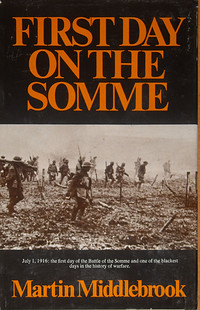Status
Collection
Publication
Description
After an immense but useless bombardment, at 7.30 am. On 1 July 1916 the British Army went over the top and attacked the German trenches. It was the first day of the battle of the Somme, and on that day the British suffered nearly 60,000 casualties, two for every yard of their front. With more than fifty times the daily losses at El Alamein and fifteen times the British casualties on D-day, 1 July 1916 was the blackest day in the history of the British Army. But, more than that, as Lloyd George recognised, it was a watershed in the history of the First World War. The Army that attacked on that day was the volunteer Army that had answered Kitchener's call. It had gone into action confident of a decisive victory. But by sunset on the first day on the Somme, no one could any longer think of a war that might be won. Martin Middlebrook's research has covered not just official and regimental histories and tours of the battlefields, but interviews with hundreds of survivors, both British and German. As to the action itself, he conveys the overall strategic view and the terrifying reality that it was for front-line soldiers.… (more)
User reviews
Mr. Middlebrook takes care to tally British casualties (on July 1, 1916 only) at about 57,000, more than all British loses in the Crimean, Boer, and Korean Wars combined. He discusses the history of the British war cemeteries there, and he has an appendix that is an outline of a modern motor tour of the area.
